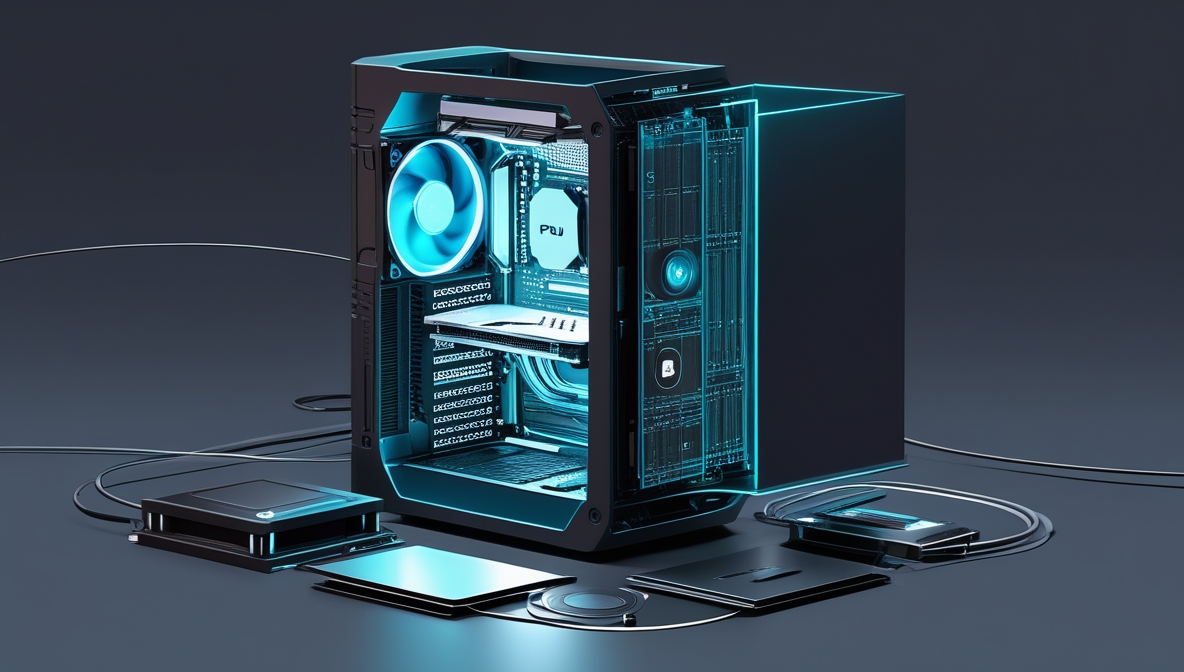Upgrading Your PC: How to Prioritize Components for Maximum Impact
Upgrading your PC can significantly improve performance, but the impact depends on prioritizing the right components. Here’s how to focus on upgrades that provide the most value for your setup.
1. Assess Your Current System’s Weaknesses
Before purchasing new hardware, identify bottlenecks. Use a bottleneck calculator to analyze how your current components interact and pinpoint which upgrades will deliver the best performance gains. Tools like Task Manager or third-party software can help pinpoint issues such as CPU or GPU overload, insufficient RAM, or storage limitations.
Common Bottlenecks:
- Gaming Performance: Check GPU and CPU utilization.
- Slow Boot Times: Examine your storage type.
- Multitasking Issues: Evaluate RAM capacity and usage.
- Creative Workloads: Analyze CPU and GPU performance for rendering or editing tasks.
2. Prioritize Your GPU for Gaming
For gaming-focused setups, upgrading the GPU often yields the most significant improvements. A powerful GPU directly impacts frame rates, resolution, and graphics quality.
Key Considerations:
- Resolution: Match the GPU to your monitor’s resolution (e.g., 1080p, 1440p, or 4K).
- Frame Rates: Ensure the GPU supports desired refresh rates.
- Future-Proofing: Opt for a model with sufficient VRAM for modern titles.
3. Upgrade Your CPU for Multitasking and Productivity
The CPU is the heart of your PC, responsible for handling multitasking, computational workloads, and overall responsiveness.
When to Upgrade:
- Applications feel sluggish despite GPU upgrades.
- High CPU utilization during gaming or productivity tasks.
- Programs like video editors or CAD software require higher clock speeds or more cores.
Factors to Evaluate:
- Cores and Threads: More cores benefit multitasking and demanding applications.
- Clock Speed: Higher speeds improve single-threaded tasks like gaming.
- Socket Compatibility: Ensure your motherboard supports the new CPU.
4. Boost System Responsiveness with SSD Storage
Switching to an SSD can dramatically reduce boot times, loading screens, and file transfer speeds.
Recommended Storage Setup:
- Primary Drive: Use an NVMe SSD for the operating system and essential applications.
- Secondary Storage: Add a larger SATA SSD or HDD for less demanding tasks and file storage.
5. Add RAM for Better Multitasking
Upgrading PC RAM is one of the simplest ways to enhance multitasking and eliminate sluggishness when running memory-intensive applications. Insufficient RAM causes frequent slowdowns, especially when running multiple applications simultaneously.
Guidelines for Upgrading RAM:
- Capacity: 16GB is sufficient for most users; 32GB is ideal for gamers and professionals.
- Speed: Match the RAM’s frequency with your motherboard’s supported speeds.
- Compatibility: Ensure the new RAM is compatible with your motherboard and existing modules.
6. Ensure Stable Power Delivery with a Quality PSU
An underrated but essential component, the power supply unit (PSU) ensures stable power delivery to all parts of your system.
Why Upgrade Your PSU:
- Newer components often require more wattage.
- An old or low-quality PSU risks hardware failure.
- Modular PSUs offer easier cable management.
Choosing the Right PSU:
- Wattage: Calculate your total power needs using online tools.
- Efficiency Rating: Look for an 80+ certification for better energy efficiency.
- Reliability: Opt for brands with good reputations and warranties.
7. Improve Cooling for Long-Term Performance
Upgraded components generate more heat, making efficient cooling crucial for performance and lifespan.
Cooling Solutions:
- Air Cooling: Affordable and effective for most builds.
- Liquid Cooling: Ideal for high-performance setups or overclocking.
- Case Fans: Enhance airflow and reduce component temperatures.
8. Upgrade the Motherboard for Compatibility
The motherboard determines compatibility for almost every component in your system. Upgrade it only when adding components that exceed its limitations.
When to Upgrade:
- Incompatible CPU or GPU.
- Lack of support for faster RAM or storage technologies.
- Need for additional expansion slots or connectivity features.
9. Optimize Your Display for Better Visuals
Your monitor plays a significant role in the overall experience. Upgrading components without addressing the display limits their potential.
Upgrade Considerations:
- Resolution and Refresh Rate: Match your GPU capabilities.
- Panel Type: IPS for color accuracy, TN for speed, and VA for contrast.
- Screen Size: Choose a size that complements your workspace.
10. Upgrade Input Devices for Precision
High-performance peripherals can improve productivity and gaming experiences.
Suggested Upgrades:
- Keyboard and Mouse: Mechanical keyboards and high-DPI mice enhance usability.
- Headset or Speakers: Better audio elevates gaming and multimedia.
- Controller or Joystick: Essential for specific genres like racing or flight sims.
11. Plan for Future Expandability
While upgrading, consider components that allow room for future expansion. Look for:
- Extra RAM slots.
- Unused PCIe slots for GPUs or capture cards.
- Additional storage bays for more drives.
12. Balance Your Budget
Prioritize based on your needs and allocate your budget wisely. For example:
- Gamers: Focus on GPU, monitor, and cooling.
- Professionals: Invest in CPU, RAM, and storage.
- General Users: Upgrade storage and RAM first.
Final Word
By systematically prioritizing upgrades based on your specific needs and existing hardware, you can maximize performance without overspending. A balanced approach ensures each component contributes to a well-rounded and efficient PC.












Post Comment